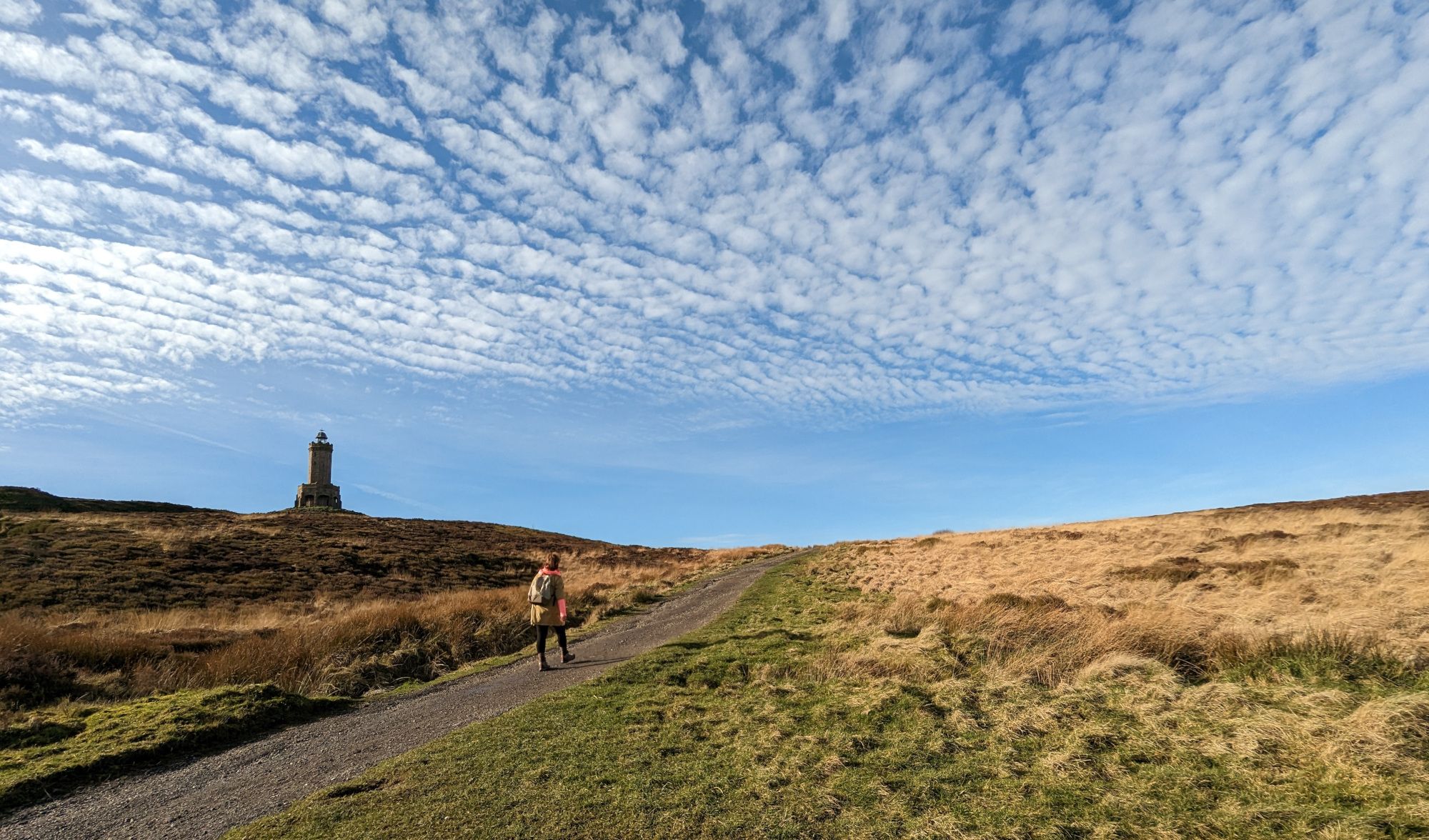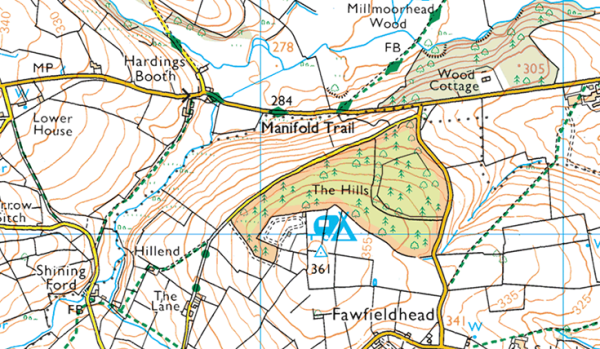Open Access Land
A guide to open access land in England and Wales

In England and Wales we have a world renowned network of footpaths which everyone has the right to walk on. We also have the right, in certain places, to walk off these paths, across privately owned land. This is known as open access. Open access gives you the chance to walk freely, explore wild, open landscapes and find your own way.
The England Coast Path, gives us a right of access to many areas between the path and the sea. This area is known as the coastal margin and allows people to explore dunes, cliff slopes and beaches, right up to the water’s edge.
Scotland has different open access rights to England and Wales.
Identifying open access land
Open access land is marked on Ordnance Survey maps as a yellow wash, and coastal margin is marked as a magenta wash. If you want to find open access land in a certain area you can search the Natural England map here.

Open access land is marked with a yellow wash - © Crown copyright 2017 OS 100033886

Coastal margin is marked with a magenta wash - © Crown copyright 2017 OS 100033886
Once you are out walking, open access land is often identified with a brown 'access' symbol. If you are leaving open access land, you may see the ‘no access’ symbol, and will need to find a public right of way to continue your walk. Given the nature of open access land, you may not see one of these signs, so make sure you have a map on you.

You are permitted to climb over walls or fences to get into, out of or across open access land, as long as you don’t damage them.
Types of open access land
Most mountain, moor, heath, down and common land in England and Wales is open access. Some woodland areas owned by the Forestry Commission and National Nature Reserves managed by Natural England also have open access, and the England Coast Path project is adding further access along the English coastline.
Restrictions
The right to walk across open access land or coastal margin can sometimes be restricted locally to ensure people don’t accidentally disturb any sensitive wildlife or interfere with rural businesses. Restrictions can apply for reasons of land management, public safety, fire risk, conservation, preservation or even defence and national security.
These can often be applied at short notice, so check whether any restrictions apply before going for a walk, even if you have walked there before. You can check for restrictions on the Natural England website.
There are some types of land on which there is never the freedom to roam. This makes sure that people’s privacy and safety, or particular types of business, are protected. Here are some of the most common types of land you may come across which you don’t have the right to roam over:
-
Buildings (and land within 20m of a building)
-
Private parks and gardens
-
Quarries
-
Railways or tramways
-
Golf courses
-
Aerodromes or airports
-
Temporary livestock pens
-
Racecourses and land used for training racehorses
-
Military land.
Exceptions and restrictions in the coastal margin (England only)
The types of land which remain off limits in the coastal margin are largely the same as on open access land. However, you are allowed to walk:
-
on land within 20m of a building
-
through land used for training racehorses
-
with your dog off the lead all year round (except around livestock). But do check for local controls which may be in force.
Access may be excluded from areas of saltmarsh and mudflat where the land is unsafe to walk. In these areas it’s important to take note of the ground conditions and read and follow instructions on local signage.
What you can do on open access land
On the majority of open access land you are allowed to go walking and running. You can also go climbing and birdwatching or even have a picnic (as long as you take your rubbish home with you).
As open access land can cover rural businesses and areas of sensitive wildlife, there are some activities that require the landowner’s permission. These include:
-
walking a dog off the lead around livestock (or between 1 March and 31 July)
-
cycling or horse riding
-
water sports, including swimming or boating
-
driving a motorised vehicle
-
lighting fires or camping
-
shooting, foraging or picking flowers
-
using a metal detector
-
organised games or commercial activities
-
interfering with activities of farmers or other landowners
Download our handy guide
You can download our handy, mobile friendly guide to open access land in English or in Welsh, to ensure you have all this information in your pocket when out walking.